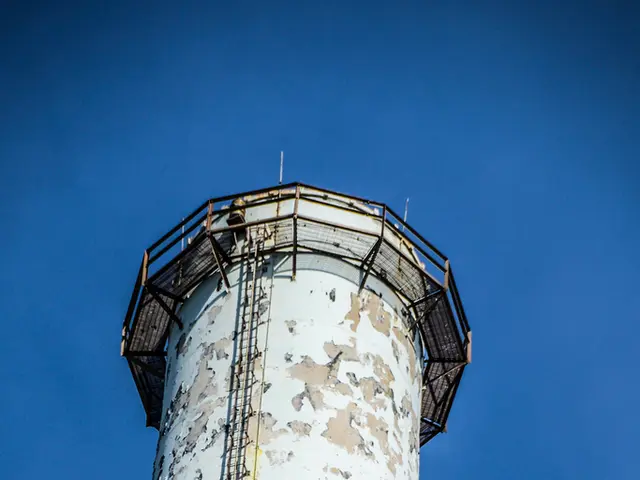London allocates €17 billion towards constructing a large-scale power station
The British crowd's still all in on nuclear energy, despite Uncle Merkel ditching it for greener pastures. Ed Miliband, our intrepid Energy Minister, envisions a rosy future brimming with clean energy that's powered by the atom. But, here's the kicker, the British taxpayers are set to cover nearly the entire cost of Sizewell C. Yep, you heard that right - it's gonna be a heavy burden on our wallets.
The government has shelled out a staggering £14.2 billion (approximately €16.8 billion) for the construction of the Sizewell C nuclear power plant nestled in the picturesque English county of Suffolk. Cheers, Ed, for your "golden age" of clean energy vision, which requires nuclear power, and for hinting at some private investments to the BBC. Still, make no mistake, Sizewell C is going to be largely taxpayer-funded. Ed's expecting energy from Sizewell C to grace the British grid by the mid-2030s.
Sizewell C boasts many similarities to Hinkley Point C, our own British nuclear power plant. It'll house two European Pressurized Reactors (EPR) and boast a capacity of 3200 megawatts (3.2 gigawatts) upon completion. The government anticipates construction to span nine to twelve years. When completed, Sizewell C is projected to supply electricity to six million homes and create a bevy of job opportunities. These reactors will likely hum until 2093, providing energy for years to come.
Suffolk's already home to two nuclear power plants, Sizewell A and B. Sizewell A shut down in 2006 due to economic reasons after churning out juice for forty years. Sizewell B, with a 1200 megawatt capacity, made its debut on the power grid in 1995. Plans to call it quits in 2035 are on the table, but there's chat about extending its operating life until 2055.
Bye-bye, China. Hello, EDF wants in, but not as much.
You guessed it, building Sizewell C will be primarily on the taxpayers. Previously, the French energy company EDF owned 80% of the project and would develop and construct it. China General Nuclear (CGN) took on 20%, but security concerns led the British government to buy out CGN from the project a few years earlier. Given EDF's struggles with debt and cost overruns at Hinkley Point C, they've been forced to slash their stake in Sizewell C, leaving the British government with a whopping 83.5% ownership, with the remaining 16.5% in EDF's hands.
Electricity prices surge, and construction time prolongs
Hinkley Point C, a sister plant to Sizewell C, has seen its costs spike considerably from the original estimate. Costs could now reach a hefty £46 billion (nearly €53 billion). Back in 2013, EDF estimated the costs at €19 billion when construction commenced. The first reactor might not hum to life until 2031, a ten year delay from the original plan. To ease the financial burden, EDF will charge British consumers a higher electricity fee.
Megaprojects: A Troublesome Legacy
Digging into data on large-scale projects reveals that Sizewell C isn't in an isolated situation. Historically, nuclear power plants have averaged a whopping 120% overbudget compared to initial plans. So, we can expect Sizewell C to cost the British government around €37 billion more than initially planned. Delays are common too, with nuclear power plants typically taking 204% longer than planned to complete. For Sizewell C, this implies a construction period of 27 to 36 years.
Sources: ntv.de, chr
Enrichment Insights:
- The initial cost estimates for Sizewell C hovered around £20 to £30 billion; recent reports indicate the total cost could now be as much as "more than £40bn," potentially doubling some early projections[3].
- Construction delays are expected at Sizewell C due to its similarities with Hinkley Point C, which has already faced delays and cost overruns[4].
[1] ntv.de. (2022, September 1). Why China Can Build Nuclear Power Plants and the West Can't. www.ntv.de[2] Dharwadker, G., & Collingridge, S. (2013, September 15). The Problem with Megaprojects: Why the World Bank Might Finally Give Up on Infrastructure Investment. Brookings Institution. www.brookings.edu[3] Shellens, R. (2022, July 5). Sizewell C nuclear power plant could cost twice as much as originally planned - InsideHook. InsideHook. www.insidehook.com[4] Warnock-Smith, A. (2022, May 30). Why Ed Miliband's 'golden age' of nuclear power is misleading. The Conversation. www.theconversation.com[5] BBC News. (2022, March 15). Sizewell C: Input costs and investment agreed, government confirms. www.bbc.co.uk
- The community is facing a significant policy decision, as the majority of the financing for the Sizewell C nuclear power plant will come from taxpayers, rather than private investments.
- Politicians, such as Ed Miliband, are pushing for further investment in nuclear energy due to its potential to deliver clean energy, but the sizeable financial burden on the public may raise questions in the realm of general-news and politics.
- As Sizewell C carries similarities to Hinkley Point C, it may be subject to similar issues faced by its sister plant, such as cost overruns and construction delays, which could ultimately impact the vocational training and employment opportunities in the energy and technology industries.







